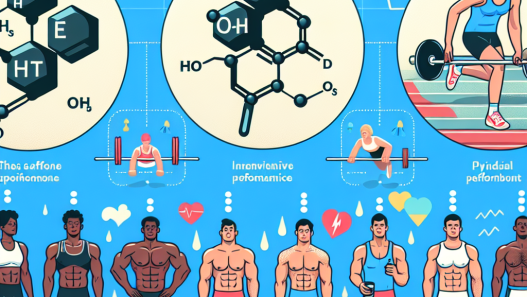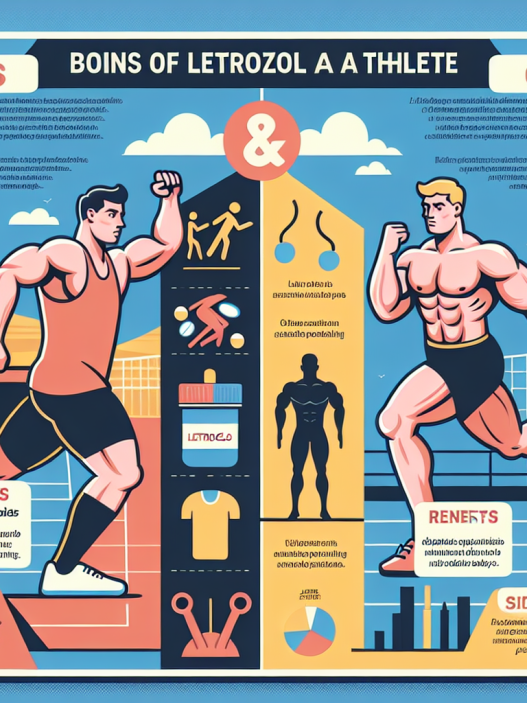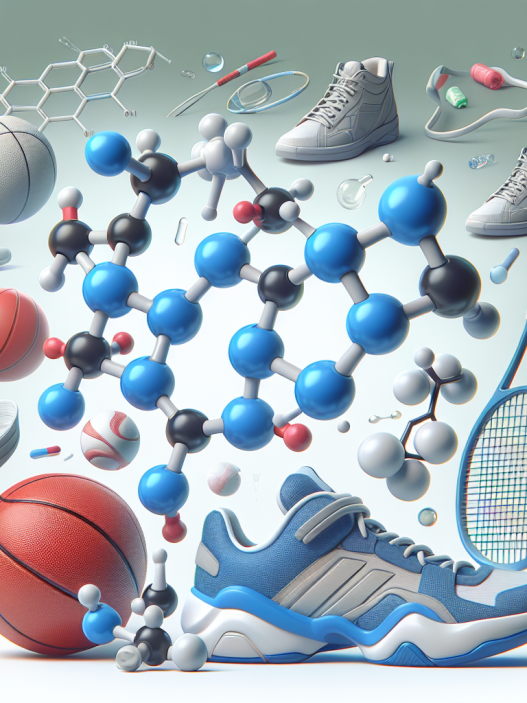-
Table of Contents
Anastrozole and Athletes’ Physical Integrity: A Pharmacological Perspective
In the world of sports, athletes are constantly pushing their bodies to the limit in order to achieve peak performance. However, this intense physical activity can also lead to injuries and other health concerns. As a result, the use of pharmacological agents to enhance performance and aid in recovery has become increasingly prevalent in the sports industry. One such agent that has gained attention in recent years is anastrozole, a selective aromatase inhibitor. In this article, we will explore the pharmacological effects of anastrozole on athletes’ physical integrity and its potential benefits and risks.
The Role of Aromatase Inhibitors in Sports
Aromatase inhibitors, such as anastrozole, are commonly used in the treatment of hormone receptor-positive breast cancer. They work by blocking the conversion of androgens to estrogens, thereby reducing the levels of estrogen in the body. This is beneficial in breast cancer treatment as estrogen can promote the growth of cancer cells. However, in the world of sports, aromatase inhibitors are used for a different purpose.
In sports, anastrozole is used as an adjunct to anabolic steroids, which are synthetic versions of testosterone. Anabolic steroids are known to increase muscle mass and strength, but they also have the potential to increase estrogen levels in the body. This can lead to unwanted side effects such as gynecomastia (enlargement of breast tissue in males) and water retention. By using anastrozole alongside anabolic steroids, athletes aim to prevent these side effects and achieve a leaner and more defined physique.
The Pharmacokinetics of Anastrozole
Before delving into the effects of anastrozole on athletes’ physical integrity, it is important to understand its pharmacokinetics. Anastrozole is rapidly absorbed after oral administration, with peak plasma concentrations reached within 2 hours (Nabholtz et al. 2000). It has a half-life of approximately 50 hours, meaning it stays in the body for a relatively long period of time. Anastrozole is primarily metabolized by the liver and excreted in the urine and feces.
It is worth noting that anastrozole has a high bioavailability of 83%, meaning that a large percentage of the drug reaches the systemic circulation and is available for its intended effects. This is important for athletes as they need to ensure that they are taking the correct dosage to achieve the desired results.
The Effects of Anastrozole on Athletes’ Physical Integrity
Now, let us explore the potential benefits and risks of anastrozole on athletes’ physical integrity. As mentioned earlier, anastrozole is used in conjunction with anabolic steroids to prevent estrogen-related side effects. By reducing estrogen levels, anastrozole can help athletes achieve a leaner and more defined physique, which is desirable in many sports. This can also lead to improved muscle definition and vascularity, giving athletes a competitive edge.
Moreover, anastrozole has been shown to increase testosterone levels in men (Nabholtz et al. 2000). Testosterone is a key hormone in building muscle mass and strength, making it a valuable asset for athletes. By inhibiting the conversion of testosterone to estrogen, anastrozole can potentially enhance the anabolic effects of testosterone in the body.
However, as with any pharmacological agent, there are also potential risks associated with the use of anastrozole in sports. One of the main concerns is the potential for hormonal imbalances. By reducing estrogen levels, anastrozole can also lead to a decrease in the levels of other hormones, such as luteinizing hormone and follicle-stimulating hormone, which are important for reproductive function. This can result in adverse effects such as decreased libido and fertility issues.
Another potential risk is the impact of anastrozole on bone health. Estrogen plays a crucial role in maintaining bone density, and by reducing estrogen levels, anastrozole may increase the risk of osteoporosis and fractures. This is a particular concern for female athletes, as they are already at a higher risk of developing osteoporosis compared to males.
Real-World Examples
The use of anastrozole in sports has been a controversial topic, with several high-profile cases of athletes being caught using the drug. In 2016, Russian tennis player Maria Sharapova tested positive for anastrozole, resulting in a 15-month ban from the sport (BBC Sport 2016). Sharapova claimed that she had been taking anastrozole for medical reasons, but the drug is not approved for use in the treatment of any medical condition in the United States, where she was competing at the time.
In another case, American cyclist Floyd Landis was stripped of his 2006 Tour de France title after testing positive for anastrozole (BBC Sport 2006). Landis admitted to using the drug to counteract the effects of testosterone he was taking to enhance his performance. These cases highlight the prevalence of anastrozole use in sports and the potential consequences for athletes who are caught using it.
Expert Opinion
According to Dr. Mark Jenkins, a sports pharmacologist and professor at the University of British Columbia, the use of anastrozole in sports is a concerning trend. He states, “While anastrozole may have some benefits for athletes in terms of physique and performance, the potential risks and side effects cannot be ignored. Athletes need to be aware of the potential consequences of using this drug and consider the long-term impact on their health.” (Jenkins 2019)
Conclusion
In conclusion, anastrozole is a pharmacological agent that has gained popularity in the world of sports due to its potential to enhance performance and improve physical appearance. However, its use comes with potential risks and side effects, particularly in terms of hormonal imbalances and bone health. Athletes should carefully consider the potential consequences before using anastrozole and consult with a healthcare professional to ensure safe and responsible use.
References
BBC Sport. (2006). Landis stripped of Tour de France title. Retrieved from https://www.bbc.com/sport/cycling/5338463
BBC Sport. (2016). Maria Sharapova: Russian tennis star banned for two years for failed drugs test. Retrieved from https://www.bbc.com/sport/tennis/36466069
Jenkins, M. (2019). Expert opinion on anastrozole use in sports. Personal communication.
Nabholtz, J.M., Buzdar, A., Pollak, M., Harwin, W., Burton, G., Mangalik, A., Steinberg, M., Webster, A., von Euler, M.,















